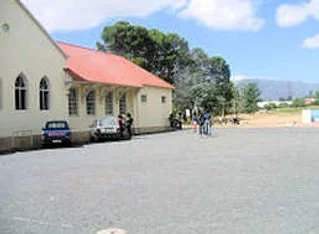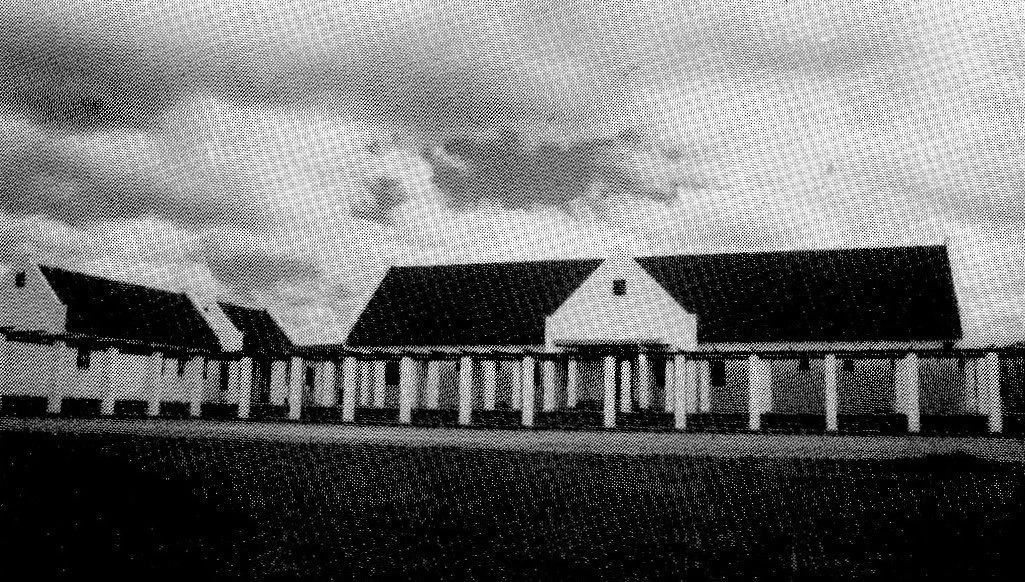
McGREGOR SCHOOLS
On 1 August 1867 the process of purchasing land from Mr JP van Reenen was initiated, with the intent of establishing a school - the Lady Grey School. This building was a multipurpose hall that could be used for both worship and teaching. This led to the building of the Gothic Revival-style hall that is still in existence at 1 Church Street. It is believed that the site was chosen as it already had an old farm building on it that was used for services before the village was established.
In 1875 it was decided that a new teacher’s residence should be built alongside the school itself. This Victorian addition was built by Mr AJ Schoonwinkel in September 1876. These efforts were further supported by the late Mr. Stephanus Malherbe.
For the first decades of village life, the school served as a non-denominational school and church, serving all members of the village and surrounding farms. At the turn of the century the need arose for additional classrooms so the building to the left of the original hall was built as a dedicated school in 1913. Called the Lady Grey Public School, it was built in the typical Edwardian architectural style of the day. The school had up to 100 children from nearby farms, most of whom were boarders, which gave a considerable boost to the village’s economy.
The school closed in 1983, whereafter the grounds were used as a camp site, commonly known as the ‘Kampterrein’.
LADY GREY PUBLIC SCHOOL
In 1861 the church offered the first educational classes for children from the farm Over-den-Berg and it continued offering schooling for 128 years, until the state-run McGregor Primary School opened in 1989.
In 1885 the first dedicated school building was built behind the church. Mr. Hartzenberg, a Wesleyan minister, was the first schoolmaster.
In the rainy season school attendance dropped significantly due to the village being cut off by river, which meant that neither people, food nor the post could get through.
The church was part of a school feeding scheme in the 1940s and 1950s. When older children reached a certain age, they were expected to bring in an income to support the household and would have to leave school, giving their younger siblings a chance to get an education. School fees, which were due upfront every year, also acted as a barrier to children’s continuing education.
Frederick Jordaan:
On 30 August 1913 I first saw the light of day at McGregor. Both my parents were born at McGregor, went to school there and married. The first teacher at McGregor was the late Mr Hartzenberg, under whom both my parents and two older sisters went to school. The school at that time was affiliated with the Wesleyan Church which also paid Mr Hartzenberg’s salary of £1 per month. Old Master Hartzenberg was originally from Genadendal.
When I left McGregor in 1925, I was twelve years old (we had moved to Worcester) and in Standard Three. Mr. Hartzenberg was my Standard Two teacher and he was assisted by two assistants, Mr. Wilschut and Miss Manko. Our Standard Two class was housed in the church. In 1924, Mr. Hartzenberg retired and Mr. DB van Niekerk took over.
I can proudly say that I was the first native of McGregor to qualify as a teacher. My father was a whip-burner and did not have much of it; on the other hand, they were very interested in education.
LADY GREY METHODIST SCHOOL
The state-run McGregor Primary School was officially opened on the 6 April 1989. The McGregor Methodist School had been at full capacity for many years, resulting in various rooms all over the village being rented as classrooms, with some classes needing double shifts. In 1984 it was finally determined that a much bigger school was needed.
The school has deep gratitude in praise and honor to the Wesleyan Methodist Church for the foresight of the Ancestral Council of Representatives, who under the Department of Education and Culture, were able to manifest the McGregor Primary School.
The government proposed the standard, modern design that was in use for schools at the time. This did not relate to the vernacular heritage of McGregor so the village, under the guidance of Philip Terblanché, negotiated with the Department of Education to change the design. The result was that McGregor now has a Primary School that fits in with the style of the village.
The school plays a vital role in educating the community’s children, who are provided with the opportunity to become the best possible version of themselves. The school recently incorporated a new science laboratory which has introduced the children to a world reaching far beyond McGregor.
Poem by Elizabeth Meloy, Standard 1, 1989:
Die water is vaal
die walle is rooi,
maar McGregor bly
nog steeds so mooi.
McGREGOR PRIMARY SCHOOL
The McGregor Fountain Waldorf School was established in 1994 in a property called Dewdrop, now known as Fountain Place – Barry Street. The first teachers were Briar Grimley, Marcelle Edwards and Susan Lapsley, who were supported by members of the McGregor community.
In 1996 the school moved into its own building in Voortrekker Street and was renamed the Whole Life Education Centre. The school has an ethos of ‘Holding Hands into the future’, as by holding hands ‘we are creating a united voice that will make a difference’.
Briar Grimley remembers the school’s opening day:
At the opening day of the McGregor Waldorf School on 19 January 1994, we stood in the garden of what is now called Fountain Place (corner Barry and Mill Streets), holding hands in a very big circle, on a beautiful sunny day under a clear blue McGregor sky. One of the teachers, Marcelle, held a White Dove of Peace in her hands. When she let it go, we imagined it spreading peace wherever it flew. That is what we wanted the school to do.
Arjan Bogaers was the chairperson of the board of trustees, and Vera Fortuin was also on the board, with her daughter, Rochelle, in my class, and her son Mornay, who is now again a teacher at the school.
The purpose of the school was to experience and learn how to be together across all differences – that there is room under the sun for everyone. I recall how one day a group of mixed age, girls and boys, of different races, financially varied backgrounds, and several home languages were playing a circle game sitting on the ground in the garden. I still remember that it was the game ‘I wrote a letter to my love…’ I stopped to watch for a while, and I noticed the children’s absolute involvement in the game, with no awareness of the differences between them. I took a deep breath as the tears welled up.
McGREGOR FOUNTAIN WALDORF SCHOOL
BYEKORF CRÈCHE
The Byekorf Crèche was the first pre-school in McGregor and was founded in 1990 by Marcelle Edwards. She foresaw the need for a pre-school in McGregor as they play a pivotal role in early childhood development. Most of the families who sent their children there were seasonal fruit pickers on the surrounding farms who needed their children to be looked after during the day.
The crèche, initially called Tinkerbell, started off in one of the Methodist School classrooms, which was rented at R80 per month. It was run by Christeline Davids and Florina Jansen. Kathrina Fortuin joined them later.
By 1995 the crèche had grown to three classrooms.
During the late 1990s, parents requested that the name Tinkerbell be changed to something more positive. Christeline Davids suggested the name ‘Byekorf’– inspired by the busy, productive nature of a beehive, and so the school became known as Byekorf Crèche.
In 2000 the McGregor Municipality awarded the crèche three erven for R10 each for a purpose-built school. The building was sponsored by Wêreld Visie, with parents, residents and even children helping to get it built. It was officially opened in 2000.






















